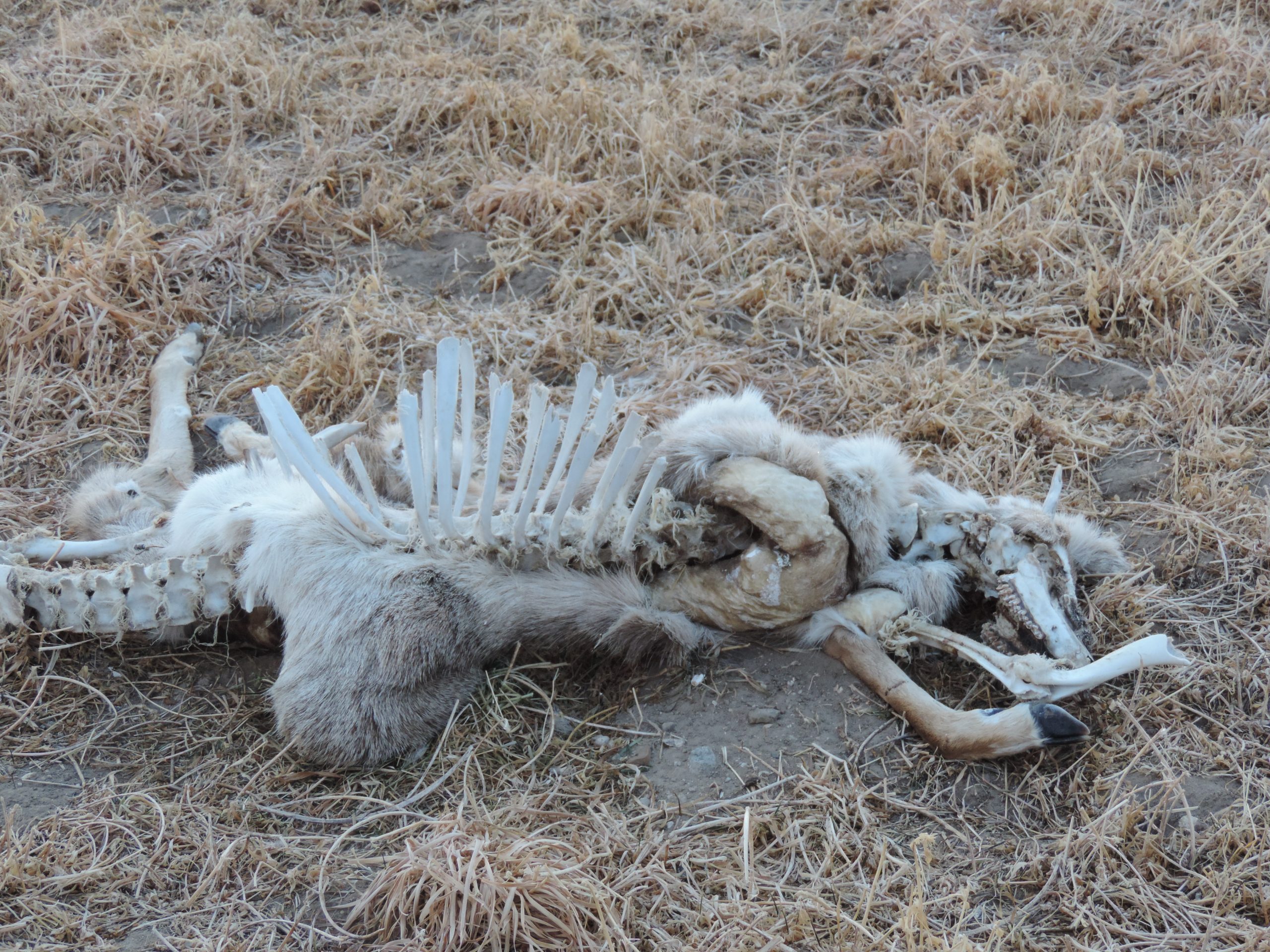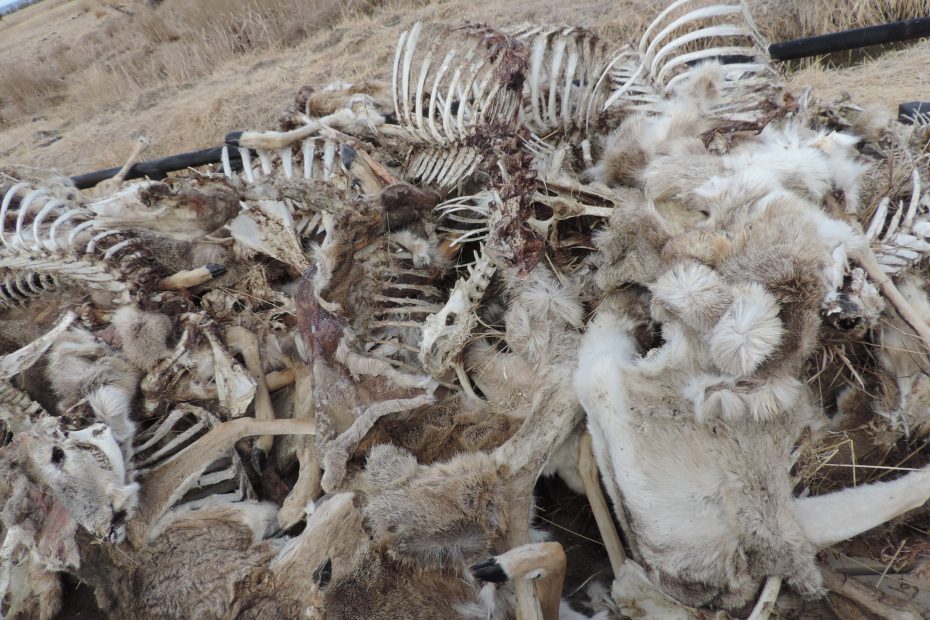In Southwest Montana, as the winter snow melts revealing a grotesque aftermath, a crew of men drive through their ag fields towing a flatbed trailer, scanning the ground for the remains of whitetail deer. They pull alongside, throw a wasted carcass onto the trailer, and drive to the next. This year they’ve loaded over 80 dead animals and hauled them to a massive 10-yard dumpster, the kind you would see at a construction site, and sent them to a dump. They filled the first dumpster and ordered another.

Our limited understanding of the history of Chronic Wasting Disease (CWD) only goes back to the 1960’s in Colorado where a captive deer at a research facility became the first animal where the disease was detected. Read that sentence again. The spread moved slowly North into Wyoming and was again found in a captive animal. The earliest study about whether CWD could transfer to humans was published in 2004, at that time it was only known to be found in deer and elk. It should be noted that whitetail deer were extirpated from SW Montana where these photos were taken in the 1890’s in a single year from what was described then as “black tongue.” Replacement deer were brought there in a trailer after WWII from Ovando, MT to create an additional source of meat for area residents. As is often the case with introduced species, they rapidly exploited the habitat and expanded their population rapidly.
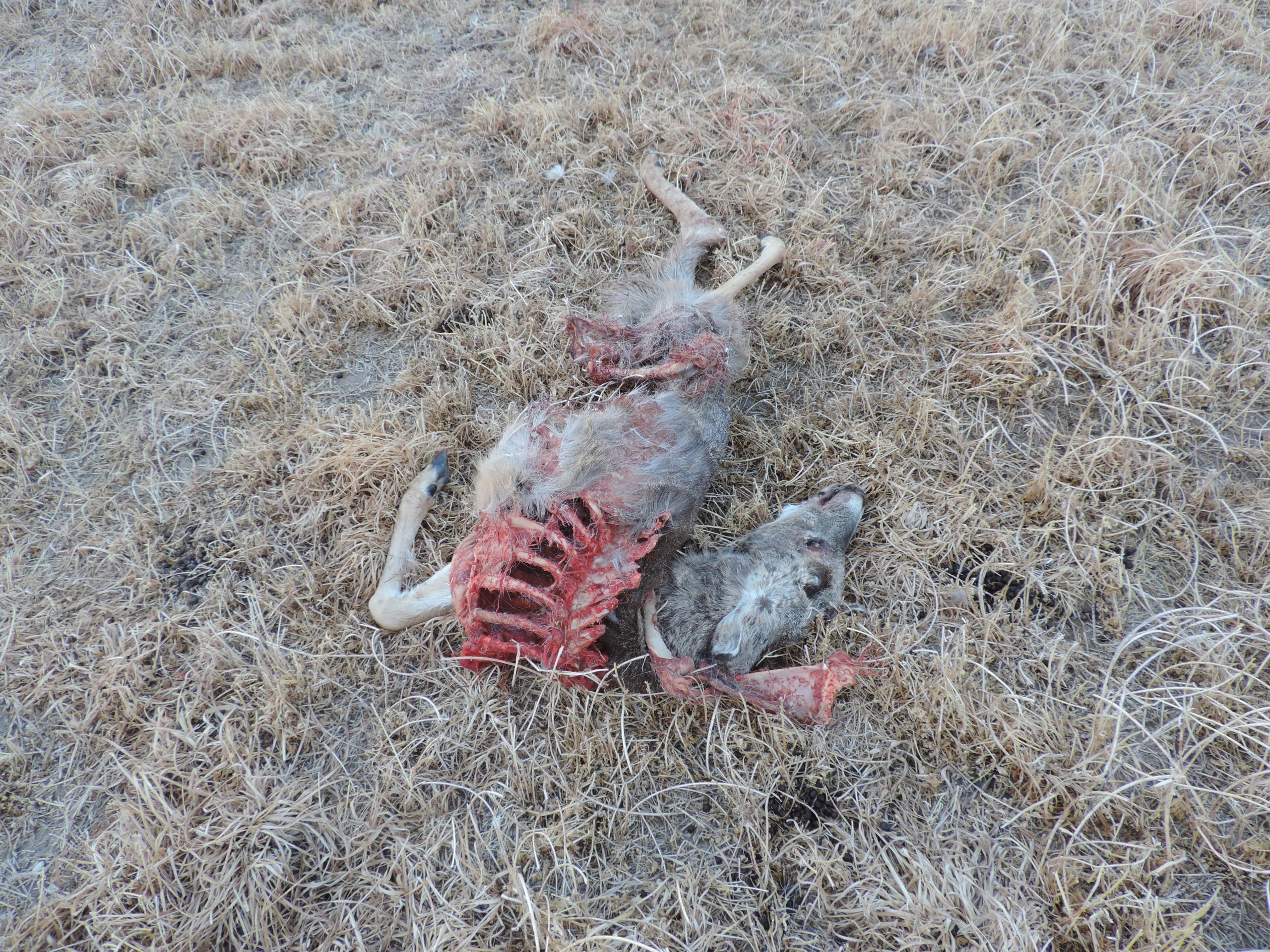
Today, CWD has been detected in 27 states, Canada, Norway, Sweden, Finland, and South Korea in deer, elk, reindeer, sika deer, and moose— all animals within the family Cervidae. Recent experimental transmission studies indicate caribou are also susceptible to the disease. (Kuznetsova, Alsu, et al. “Potential role of soil properties in the spread of CWD in western Canada.” Prion 8.1 (2014): 92-99.) It is not known whether CWD can be transferred to humans, but within laboratory settings it has been transferred to mice with human genes, squirrel monkeys, and the Macaque, a primate that bears incredible genetic similarities to humans. Perhaps most alarming, is that the transfer of CWD to this primate was done by feeding it the meat of a Cervid who was infected with CWD but wasn’t showing any symptoms. A similar study was conducted in 2018 which did not show the Maceque as able to contract CWD.
CWD is a prion disease. A prion is a mutated protein, which has no nucleic acid, meaning that it cannot be killed like bacteria and viruses which cannot tolerate UV, heat, bleach, etc. Animals can become infected by drinking contaminated water, eating contaminated food, nose-to-nose contact, through bodily fluid transfer, or from eating an infected animal. Say one of these CWD deer in Montana dies in a hayfield, and those prions go into the soil and come back up in the hay, and that hay gets sold and transferred somewhere else… that’s where these prions go as well. There is no science to back this theory up, I’m just grasping at potential ways to understand how CWD can jump large distances and show up in new areas. A lot of what we understand about prions is so limited that the word “hypothetical” gets thrown over any statement like a wet blanket. We don’t currently have the means of testing plants to see if they contain the prion which causes CWD.
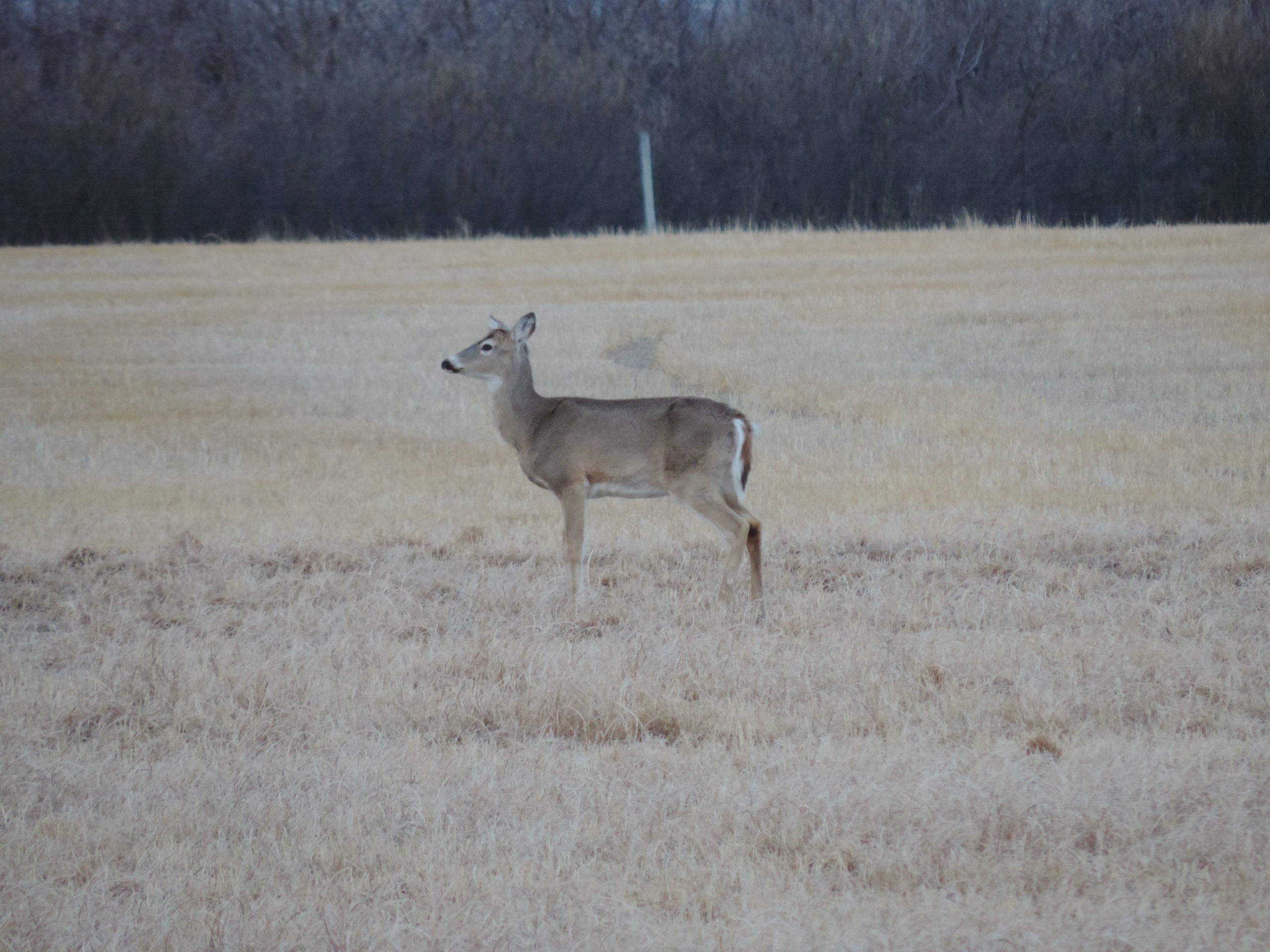
Once this prion is inside an animal it travels to the brain. As it contacts other proteins, it causes them to mutate and become prions and spreads from the nervous system to the lymphatic system and then into every other part of the animal. Other prion diseases are Scrapie (found mostly in sheep), Mad Cow disease (which did infect and kill humans), and Creutzfeldt-Jakob disease.
According to the CDC, prion diseases are always fatal. Brandon Mason from Eastman’s Hunting Journal brought up a very interesting point on that subject— how can we know CWD is 100% fatal if we cannot test live animals? That’s a problem.
Back on the ranch in Montana the manager first noticed extra “winterkill” in 2012, where there’d be around 20 dead animals in the field each spring, that number started to tick up in 2015, and by 2020 they were starting to observe living deer that looked very sick. The first case of CWD confirmed in Montana was near Billings in 2017 near the Wyoming border. On the ranch, they tested their first deer for CWD in 2019 and it came back as infected. In 2020, they tested every single deer they harvested with 30.9% of those tested coming back as positive. In 2021, they again tested every single animal they harvested and 60.1% came back as positive, substantially higher than the maximum 50% that has been described in peer-reviewed literature. This particular ranch is an excellent whitetail deer habitat, and the population has been well monitored. Since 2002 the density of whitetail was 130 deer per square mile. The survey this spring has that number reduced to 50 deer per square mile. It is likely that the density of deer in this area created a situation where the disease could spread quickly. In 2015 they harvested 38 deer per square mile which comprised of 21% bucks, this harvest rate did not increase or decrease the 130 deer per sq mile population. Since the increase of CWD, biologists have taken a similar approach to what they did with the Bighorn Sheep of the Tendoy Mountain Range, also in SW Montana, which is to eradicate the population. Easier done with sheep than deer.
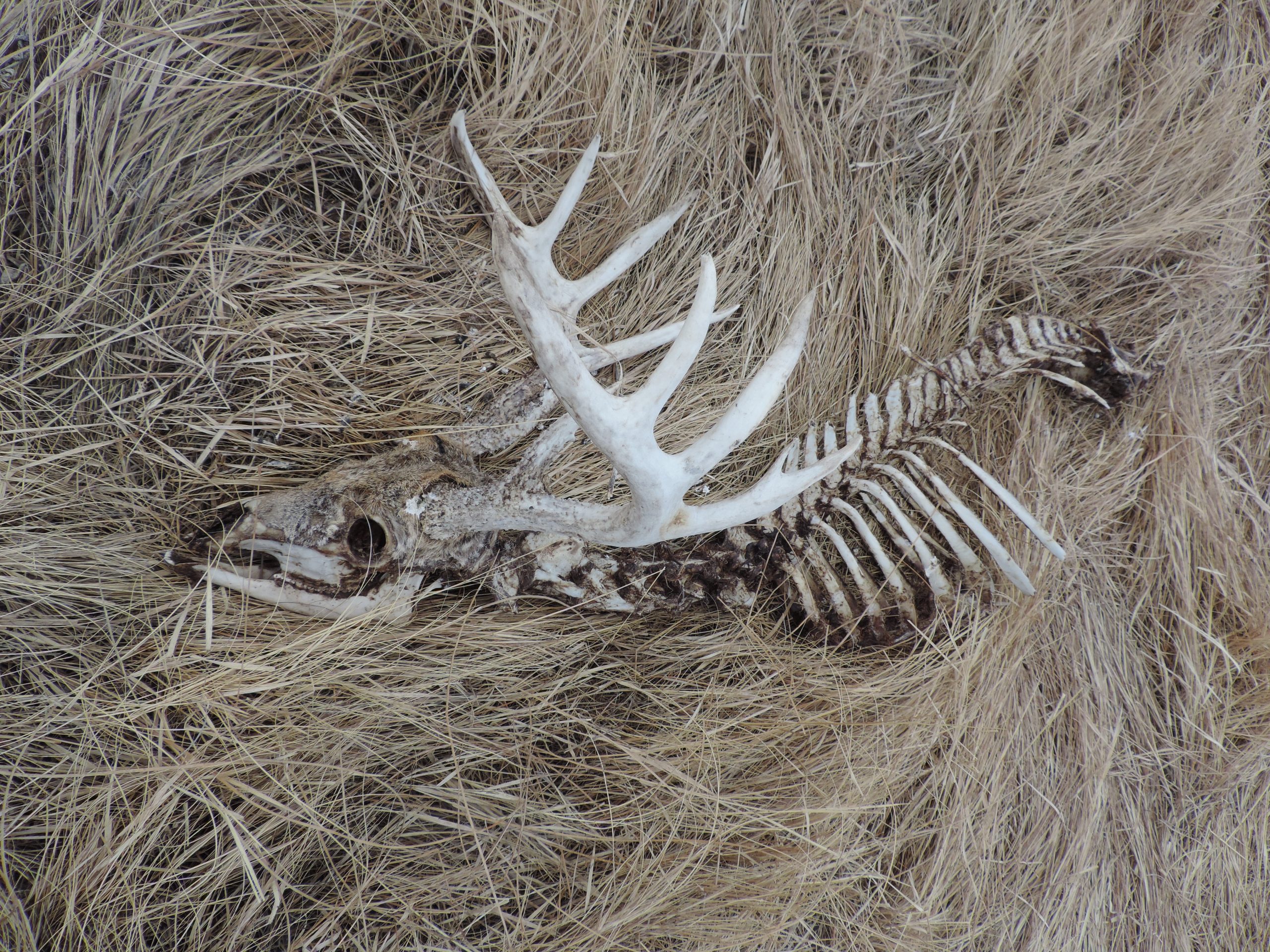
The likelihood is that every deer on this Montana ranch has been exposed to CWD but not all of them have died, which makes a guy wonder about the whole 100% fatal thing. We need to be taking a hard look at the deer which are exposed and not dying because therein may lie the answer to how to beat this problem.
Each deer harvested on this ranch gets weighed with its guts in as a “live weight” before being processed in an indoor facility. A hanging weight, the sex, the antler score on bucks, and whether a doe has milk or not is also recorded. Two teeth are pulled from each animal and sent to a lab to determine the animal’s age. This data has become helpful in the early detection of CWD. The average weight for a 5-year-old buck varies between 194 and 224lbs, largely depending on the amount of precipitation the land gets in a given year. A positive CWD buck killed in 2021 weighed 154lbs.
As the prions spread through the animal, their muscle mass decreases, holes and lesions develop in their brain, they stagger and salivate, and become irrational. They also lose their fear of vehicles, humans, and predators. Some develop pneumonia and drown. The early phases of this breakdown make them much easier to hunt, which increases the chances a hunter unknowingly takes home infected meat. Infected animals become excessively thirsty and urinate more, spreading the disease farther. Their ears become droopy, and bucks become less likely to shed velvet. “CWD can affect animals of all ages and some infected animals may die without ever developing the disease. CWD is fatal to animals and there are no treatments or vaccines.” CDC website. Domestic livestock have not been naturally infected yet, but by injecting the prion into their brains, goats, sheep and cattle have all become infected in a lab setting. (Williams, E. S. “Chronic wasting disease.” Veterinary pathology 42.5 (2005): 530-549.)
The test for CWD in Montana starts by removing a gland behind the deer’s jaw, it’s the same gland that swells up in your neck when you are sick. The testing process takes 52 steps to confirm and costs $17. Results take as long as three weeks. Of course, most folks don’t have cold storage to hang an animal for that long, and if the results come back as infected, they have now contaminated their facility. This puts hunters in quite a pickle. The CDC also recommends not using a knife to process a potentially infected game animal that you would use for any other purpose. It is not known at which stage of infection results become conclusive, but animals as young as 17 months have died from CWD.
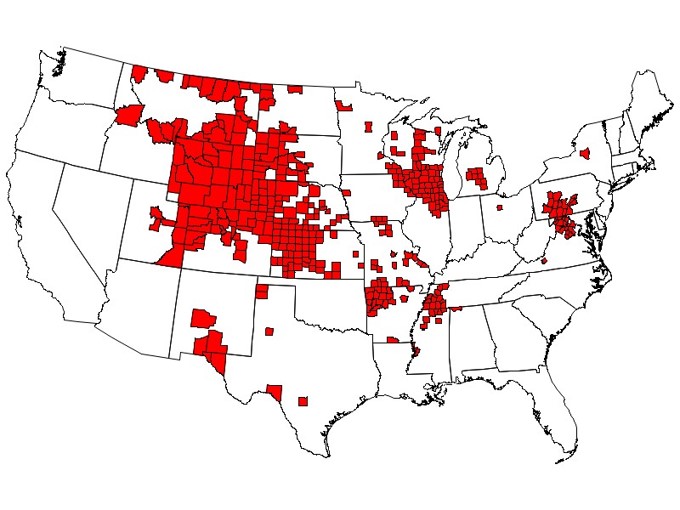
What do we have to lose? Quite a bit. This has the potential to continue spreading through carrier species and continue to affect individuals and populations in new areas. As lab studies have indicated, species like primates can be affected. In case you were duck hunting on that day of school, humans are primates. We could see dramatic decreases of our Cervid populations. Without the money from deer and elk hunting, every state wildlife agency in the country will likely go bankrupt. Areas like SW Montana, which depend on outfitting for much of their revenue are being devastated financially. Over 25 million dollars were spent on outfitters in Madison County alone in 2021. Property values are going down, and people are afraid to eat the venison their families have depended upon for generations.
What can we do? For starters, we need to test our animals. CWD isn’t found everywhere, but it also isn’t tested everywhere. Talk to your local biologist and see what they need in order to test the deer or elk you shoot. We need to stop moving meat around the country, especially from known CWD areas. We need to throw our weight into learning about prions, how they move through systems, and which proteins they mutate and are mutated from. We need to find a way to test living animals and a faster means of testing dead ones. A field testing kit would be ideal. Mostly, we need to take CWD seriously and do our best to stop the spread without making hasty decisions.
